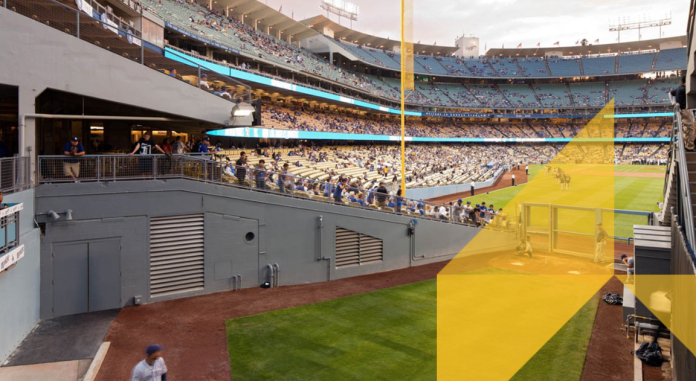Special Report
Wayne Melnyk is a huge Los Angeles Kings fan, but he’s also a big fan of getting construction projects done on time and on budget.
So, when the 2022-23 National Hockey League season was ending and the Kings were projected to go multiple rounds in the Stanley Cup playoffs, Melnyk — vice president of major projects for PCL Construction in California — was torn between seeing his team compete for the championship and getting into Crypto.com Arena as soon as possible to complete scheduled renovations.
The prospect of fitting a lot of work into a short offseason might be daunting, but with the same team mentality fans might see in their favorite franchises, it can be done.
“I said to the owners, ‘Hey, even if the Kings win the Stanley Cup, we’ll get this thing done in time. Just let me lift the cup!’” Melnyk saidwith a laugh.
With vast experience building world-class stadiums and sports facilities, long-lasting relationships with arena owners across the United States, PCL has established itself as a champion of stadium renovation projects across North America.
“Offseason renovations create a sense of urgency – we know we have to work quickly to evaluate and compare multiple scenarios,” says Lane Welter, a senior project manager with PCL who’s been involved in numerous renovation projects. “PCL’s committed sports team has the knowledge and hands-on methodology needed to work with arena owners toward a common goal.”
“When you’re working in the offseason, there’s no ramp-up,” Melnyk says. “From day one, you have 80 to 100 people in the building. You’ve got to be ready to go. It’s almost like you’re sitting on the sidelines, and the minute the season ends — boom, you’re in.”
Working on such short timeframes makes these renovation projects riskier than others, but with diligent planning and a record of leveraging innovation, PCL rises to the occasion to deliver outstanding results to our clients.
“What we do well is educate owners and design teams so they make definite decisions on an accelerated timeline, which results in major benefits to cost and schedule,” says Welter. “There’s a lot of upfront pull planning with everyone from owners and designers to our PCL team and the subtrades at the table. This means all the participants can voice their opinions and concerns and commit to the schedule.”
Another factor is that, for some facilities, there’s not much of an offseason. Although teams may not be playing in arenas over the summer, there is a full schedule of concerts and other events are booked in those months. Over 10 straight nights in August 2023, for example, Crypto.com Arena hosted three nights of K-pop concerts, two Drake concerts, three nights of Monster Jam and a Zach Bryan concert.
“You have to have a great relationship with the people who run the arena,” Melnyk says. “And it’s key that it’s a two-way street. They don’t tell you what you’ve got to do — they work with you. We’re in constant communication with them. It’s important to have that relationship with the owner so you can adjust on the fly. If they can rely on us to be on time no matter what, that’s going to generate repeat work.”
With some sports arena projects, there can be so many moving parts to account for that PCL may plan out multiple schedules. For a past baseball project, for example, the PCL team had a plan for the franchise not making it to the playoffs and one for if they went all the way to the World Series.
“It’s common for projects with a much later start – when a team makes the playoffs or championships – to have stacked and overlapping activities, as well as an increase in personnel requirements. This creates a smooth, successful project environment and ensures the project timeline tracks according to schedule,” Welter says.
Special Projects Manager Jeyre Lewis and his California Buildings team have been working on extensive offseason renovations to Dodger Stadium in Los Angeles for several years.
“The things we’re talking about this year are for two seasons down the line. Owners plan two to three years in advance,” Lewis says. “But when it gets down to the drawings being dialed in for the work to be done in the upcoming offseason, it starts right around the summertime. The buildup is happening not only for the baseball team but also for the construction team.”
Most of that planning is around procuring the right materials, or coming up with alternatives if the first-choice materials aren’t available.
“Procurement is the biggest issue — the Achilles’ heel, if you will,” Lewis says. “Often we’ll have to pivot to different equipment or different material because it’s such a fast-paced project that you need to have that material ready and on hand.”
PCL’s experience with these stadium renovation projects gives stadium owners the confidence they need to move forward, even during the bidding process.
While many arena renovations focus on aesthetics and functionality — Melnyk says that upgrading washrooms has been a big concern in recent years — others are all about the fan experience.














